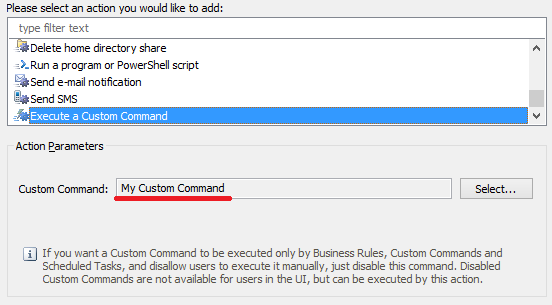Update 2018
Starting with version 2018.1, you can control the order of business rules execution. For details, have a look at the following help article: https://www.adaxes.com/help/BusinessRuleExecutionOrder.
Original
Hello Nick,
No, there is no way to define a rigid order in which Business Rules are processed. The order will change every time you create, update Business Rules or reinstall / upgrade Adaxes. However, the order in which actions / conditions are processed within the same Business Rule is always observed. So, if you want to have a strict order of actions that you want to be triggered by this or that event, you need to keep everything within the same Business Rule.
If you have very complicated logic that you feel hard to keep everything within the same Business Rule, you can split all the logic into several Custom Commands, each command containing a more or less independ set of actions/conditions. Then, you can call the Custom Commands from your Business Rule using the Execute a Custom Command action.

For information on how to create Custom Commands, see the following tutorial: http://www.adaxes.com/tutorials_ActiveD ... ommand.htm.
As for your specific task of group membership management, have a look at the following tutorial that describes how to achieve what you want with the help of Adaxes: http://www.adaxes.com/tutorials_Automat ... rtment.htm. At the end of the tutorial, you'll find a section that describes how to easily apply the same group membership on a schedule, on user creation and modification.
Also, since you are having around 100 groups to manage, you may find difficult to do this with the help of Adaxes built-in actions. In this case, you can manage group membership using scripts. For more details, have a look at the following tutorial: http://www.adaxes.com/tutorials_Automat ... cripts.htm.